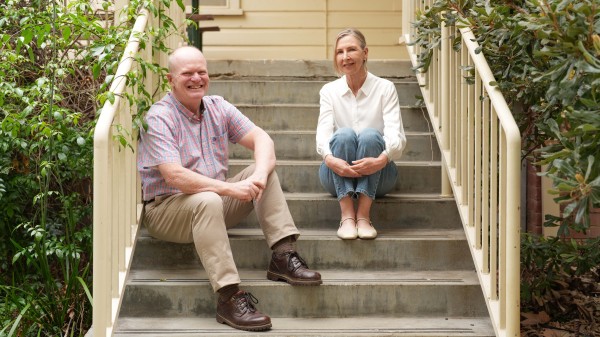Meet the psychologist curing migraines with therapy
Every time Professor Paul Martin says the words ‘migraine triggers’ – which is often because he’s an expert on migraine triggers – I feel like it’s in the imperative, as if he can cosmically evoke one in me. That’s how we approach migraines: with superstitious terror at the almost mythological suffering they can wreak.
The pain of migraines is so extreme, you can’t believe it comes "from inside your head", Andrew Levy writes in his migraine memoir A Brain Wider Than the Sky. Instead, he says, it’s more explicable that "God just punched you in the face".
Martin is a psychologist committed to scientific objectivity in his position as Interim Director of the ANU Research School of Psychology, but is not immune to mythologising.
To what else could he attribute the onset of his own migraines only after he started studying them, than the sick sense of humour of the "great psychologist in the sky"?
On his fingers he counts off the symptoms he experienced: unilateral throbbing pain, visual disturbance, nausea, vomiting, phonophobia, photophobia, vertigo, aphasia. A familiar catalogue for any sufferer and the reason why migraines are considered to be as disabling as paraplegia, dementia or heart failure.
However, Martin believes there’s a difference between these crippling medical conditions and migraines. It has nothing to do with God, and everything to with what’s ‘inside your head’.
He believes migraines can be more effectively treated by psychologists than doctors.
The traditional approach to migraine prevention has been for sufferers to identify what might be triggering the migraines – anything from stress, food additives and prescription drugs, to hormonal changes, computer screens and sleep issues – and avoid those triggers.
His approach is to look instead at the setting in which those triggers occur and work with patients to consider what specific factors might be at play in causing those triggers to elicit a migraine.
He gives the example of a patient, a stay-at-home mother, who had identified cold winds as a trigger for her headaches.
“The traditional medical approach would be to say that the cold is having a biological effect which triggers a neurological mechanism,” he says. “The cold is the trigger, therefore she should avoid the cold.
“My approach is to say, well, if she’s getting more headaches in winter than in summer, that’s a starting point, not an end point.
“It could be the children spend more time inside in the winter, which makes her more tired and stressed. Maybe her husband barbecues more in summer, meaning she has to do more of the cooking in winter, so is more tired and stressed.”
In a study of this kind of cognitive behavioural therapy (CBT) as a treatment for migraines, Martin found, for patients who had been experiencing headaches for an average of 25 years, eight sessions of CBT resulted in a 68 per cent reduction in headache activity and a 70 per cent reduction in medication use.
Intrinsic to his approach is that migraine triggers shouldn’t necessarily always be avoided. Instead, sufferers should learn to cope with them.
“Obviously some triggers, like dehydration, aren’t good for your health and wellbeing and are best avoided,” he says. “But there are others triggers, such as stress, anger, visual disturbance, noise and heat, for example, where we believe an avoidance approach only leads to decreased tolerance.
“Instead, we expose patients to the triggers in a controlled way to desensitise them to them.”
In a clinical trial looking at eyestrain as a headache trigger, Martin found that short exposure increased the pain response but, as the exposure became longer, the pain response decreased.
After 12 months of exposure to the trigger, combined with therapy on learning to cope with it, the average reduction of headaches among participants was 77 per cent.
Martin has been working in the field of headaches and migraines for 35 years and says he’s confident his approach "leaves the medics for dead" when it comes to results and, unlike drugs, has no negative side effects.
And what of his migraines? After working out how to cope with the triggers, he hasn’t had one in 30 years. “I consider myself as good as cured.”
This story was originally published in ANU Reporter.








